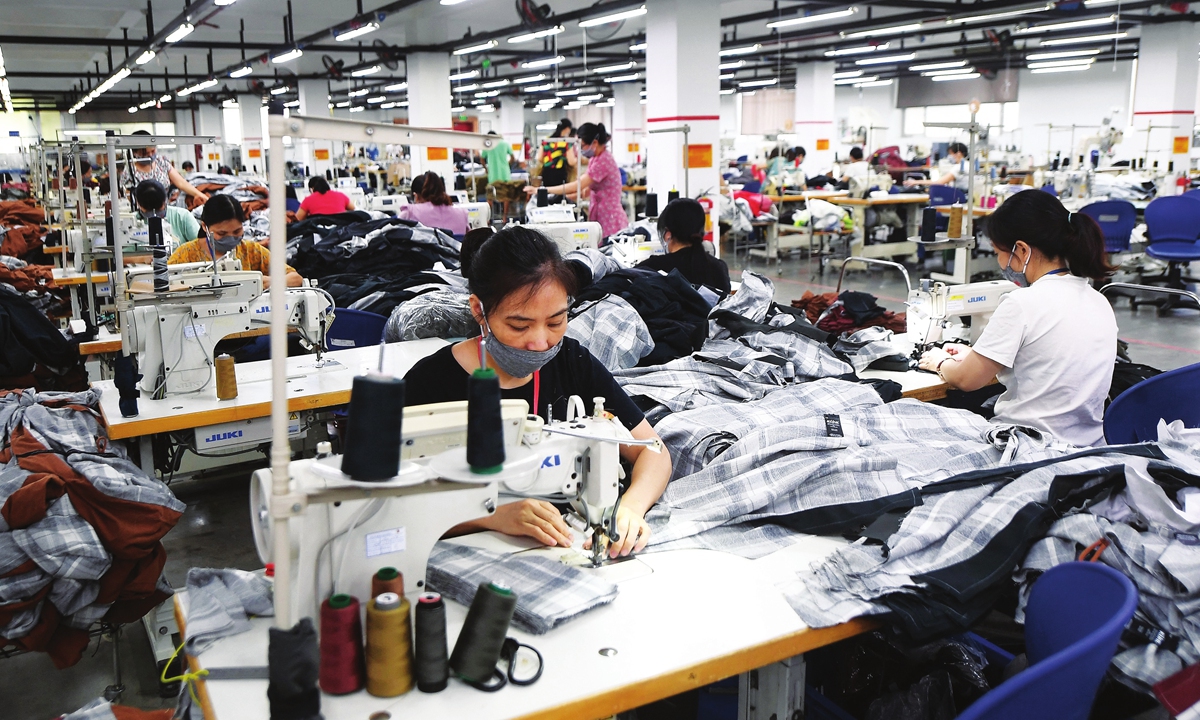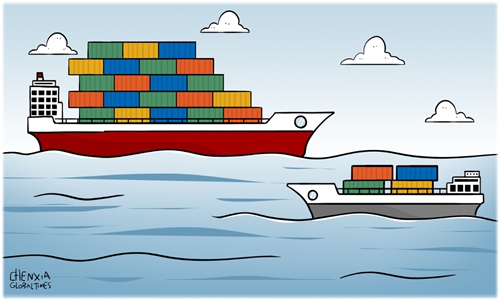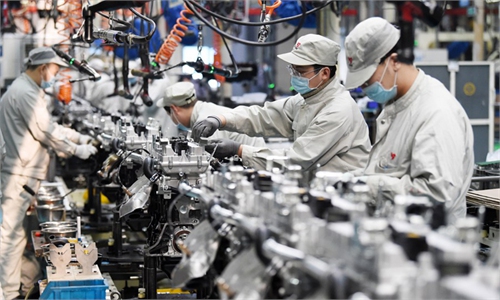
Workers wearing face masks make activewear for various textile clothing brands at a factory in Hanoi. Photo: AFP
Vietnam's Minister of Planning and Investment Nguyen Chi Dung said on Monday that the country is aiming for economic growth of 7 percent this year, higher than an official target of 6.0 to 6.5 percent set previously, Reuters reported. To achieve the new target, the country needs to reach an economic growth of 9 percent in the third quarter and 6.3 percent in the fourth quarter.At a time when the world economy is facing severe challenges, Vietnam's latest economic growth target seems particularly ambitious, which is due in large part to its overall rise in terms of investment, exports, and supply chains in the first half of this year. Vietnam's GDP grew 5.03 percent year-on-year in the first quarter. Its exports also registered a robust 12.9 percent growth.
Due to its open market environment and relatively abundant labor resources, Vietnam has been increasingly favored by the global manufacturing sector and foreign investment in recent years. In particular, against the backdrop of the China-US trade frictions, whether Vietnam will become the next world's factory after China has become a hot topic. But does Vietnam's rapid rise in manufacturing really pose a challenge for China? Is the Chinese economy bound to suffer if its Southeast Asian neighbor fares well?
Some in the West have hyped up the possibility of Vietnam replacing China's position in the global supply chain. However, it will be difficult for Vietnam to truly undertake if there is large-scale industrial transfer from China, given its relatively small economic size compared with China. Indeed, Vietnam's export growth is essentially a result of the spillover effect from Chinese manufacturing. The intricate linkage between the two economies in terms of manufacturing chains and supply chains is determined by their geographical proximity, levels of industrialization and education of labor forces. In this sense, the Southeast Asian economy is most likely to be a highly-complementary partner of China's industrial chain.
From China's perspective, Vietnam's rapid economic growth is both a boon and a challenge. The foreign investment inflow to Vietnam is one of the main factors driving its economic growth in recent years. And since Vietnam continues to consolidate and develop its position in the regional industrial chain, the rise in Vietnam's economy is also a driving force for the economic development of China and the region as a while. After all, Vietnam's development cannot be separated from China's supportive manufacturing system.
However, the reasons behind the industrial shift trend deserve attention. Given the complicated geopolitical environment, China does face a challenge as multinationals are adjusting their industrial chains. This is why although Vietnam cannot entirely replace China when it comes to manufacturing, it is still necessary to attach importance to the industrial chain substitution in some specific areas.
While it is normal for some low-end industrial chains to migrate when a country's manufacturing develops to a certain stage, we should not underestimate the competition from Vietnam. China still needs to continuously improve the market environment to attract and retain foreign investment. It is also essential for China to strengthen the manufacturing complementary relationship with Vietnam. Of course, the most important thing is to make good use of industrial transfer to facilitate domestic industrial upgrading, which is at the core of enhancing China's manufacturing competitiveness.



